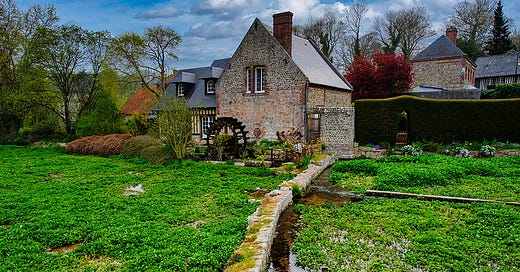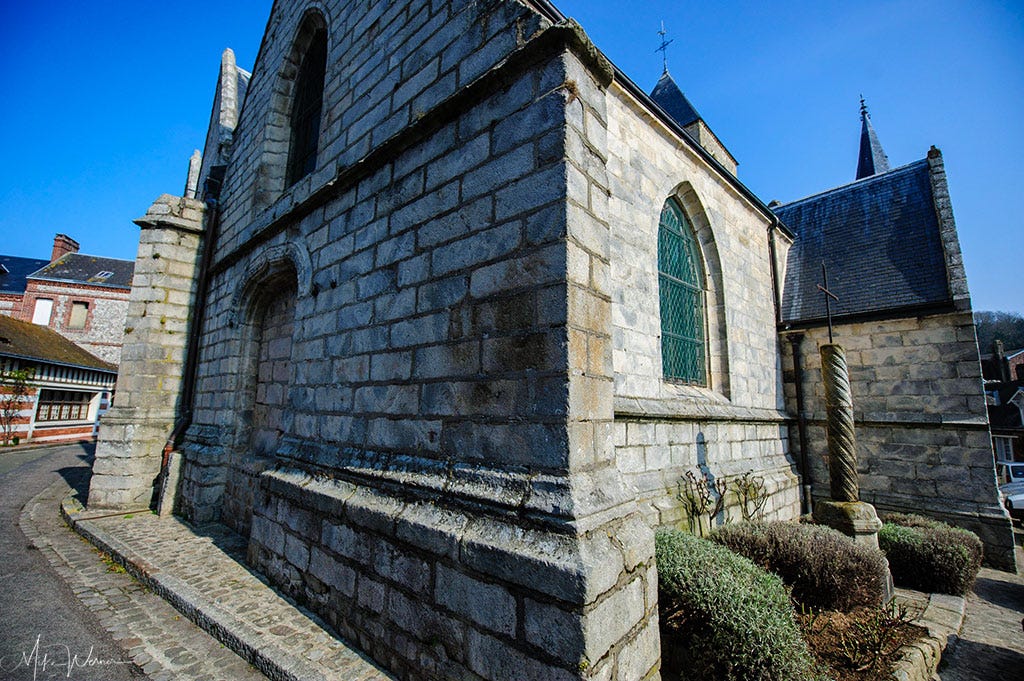Veules-les-Roses is a captivating village situated on the Alabaster Coast of Normandy, France. Its picturesque charm makes it a standout, being one of the oldest seaside resorts in the region. The village's geographical significance comes from its position on the northern coast of France, facing the English Channel. It's beautifully nestled between the towns of Dieppe and Fécamp in the Seine-Maritime department of Normandy.
Click here to see where Veules-les-Roses is located on Google Maps
One of its unique features is the Veules river that winds through it. This river holds the distinction of being France's shortest sea-flowing river with a length of roughly 1.2 kilometers.
Architectural Heritage
Diving into its history, evidence suggests that Veules-les-Roses has ancient roots, possibly being a Gallo-Roman site. Throughout the centuries, it has seen numerous invasions, including those by the Vikings. But despite its tumultuous past, the village stands resilient, offering a trove of historical edifices to its visitors.
As you meander through its narrow lanes, the charm of half-timbered houses becomes evident. In addition to the half-timbered houses, Veules-les-Roses boasts several historic manors and traditional Normandy-style villas, which were built during the 19th century when the village rose to prominence as a seaside resort.
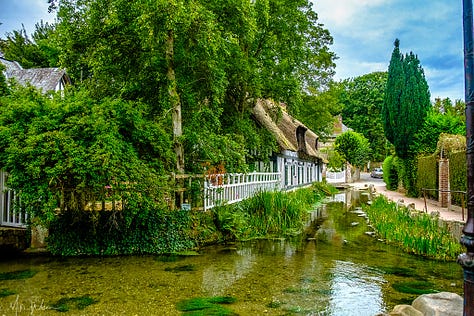
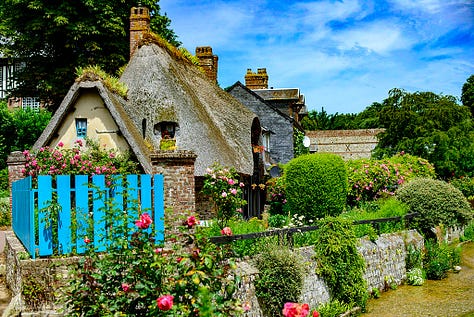

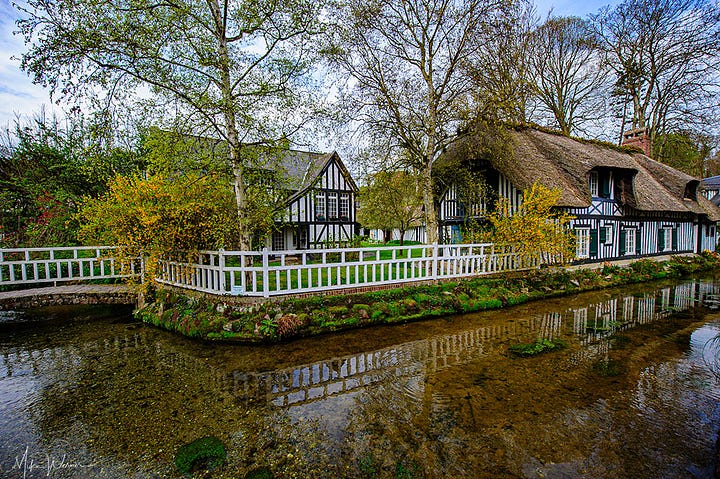
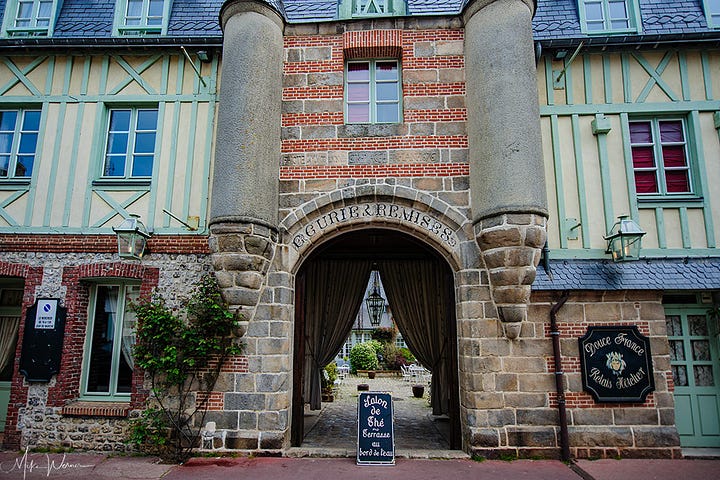


The Saint-Martin's church is another testament to its rich history, bearing witness to the various eras that the village has seen. The Saint-Martin's church, is a blend of Gothic and Romanesque architectural styles, a testimony to the village's long history.
Water Mills
The water mills in Veules-les-Roses, gracing the banks of the Veules River, are an integral facet of the village's history and aesthetic appeal. These mills, dating back centuries, were originally established to harness the power of the river, turning it into a mechanical force used predominantly for grinding grain into flour. Given the significance of bread as a primary food source in many European societies, these mills were vital to the community, serving as hubs of production and trade.
Their design reflects the traditional Norman architecture. Constructed using local materials, the mills exhibit a blend of wood and stone, providing them with a rustic appearance that seamlessly integrates with the natural surroundings. Over time, the presence of these structures amid the lush riverbanks and their iconic wooden waterwheels became emblematic of the village's scenic landscape.
While their primary function was for grinding grains, as years passed and technology evolved, some mills might have adapted to serve other purposes or were simply preserved as historical landmarks. The constant flow of the Veules River, although short in length, ensured that these mills operated efficiently, making them a reliable source of power for the villagers.
Today, the water mills in Veules-les-Roses are more than just remnants of the past. They stand as testaments to the village's rich history, a harmonious blend of man-made ingenuity and natural beauty. Tourists and locals alike are drawn to their charm, making them one of the must-visit spots in the village.

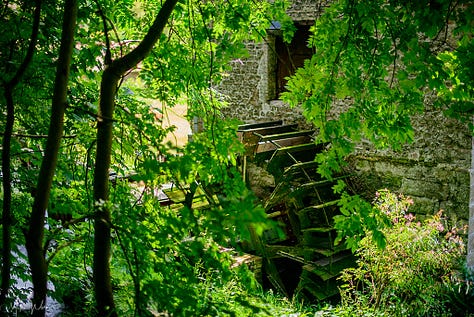
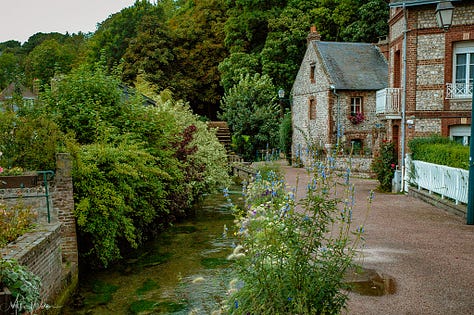

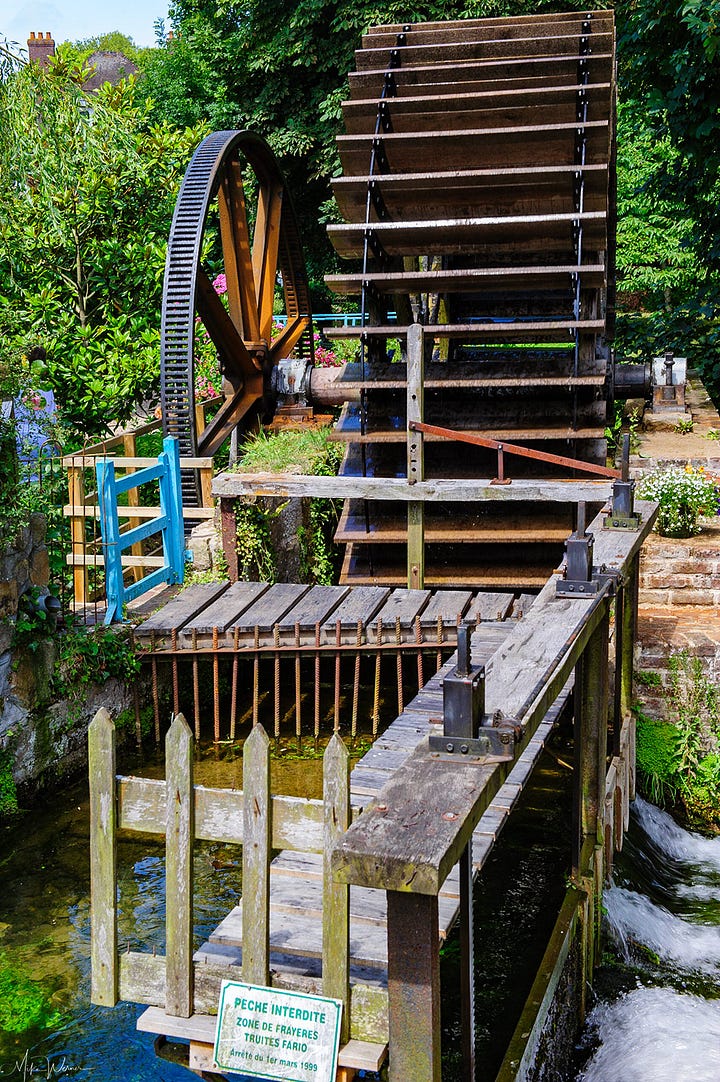
Art and Culture
The village's ethereal beauty has not only attracted tourists but also artists, poets, and writers for centuries. Victor Hugo, a renowned French writer, was known to have spent time here, drawing inspiration from the mesmerizing sea vistas and quaint village life. There are also art galleries and workshops that dot the village, showcasing the works of local artists inspired by the Normandy coastline.
Gastronomy
Being a coastal village, Veules-les-Roses has a rich culinary tradition centered around seafood. Local restaurants offer dishes made with the freshest catches from the English Channel, including the renowned Veules oysters. Additionally, creamy Normandy cheeses, apple cider, and Calvados (an apple brandy native to Normandy) are integral to the regional cuisine.
Local Festivals and Traditions
The village, in keeping with its cultural heritage, often hosts events and festivals. One of the highlights is the annual celebration of the "Fête de la Mer," a maritime festival that celebrates the village's close ties to the sea. Traditional music, dance, and, of course, food form the core of these festivities.
Economic Significance
While tourism plays a significant role in the local economy, fishing remains an important occupation for many residents. The village harbor, albeit small, is bustling with activity, especially during the early morning hours when fishermen return with their catch. The harbor is situated inland. Fishing boats are hauled onto the shore.
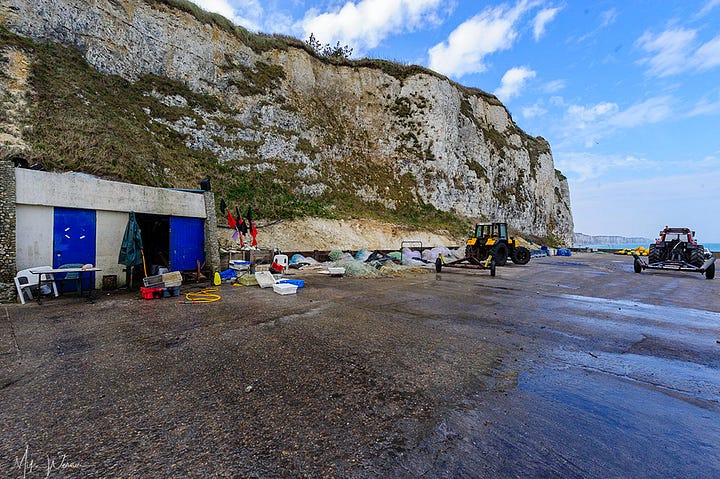

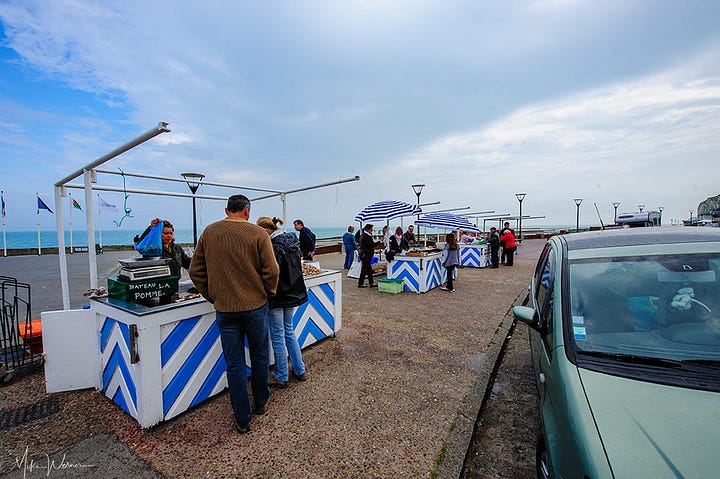
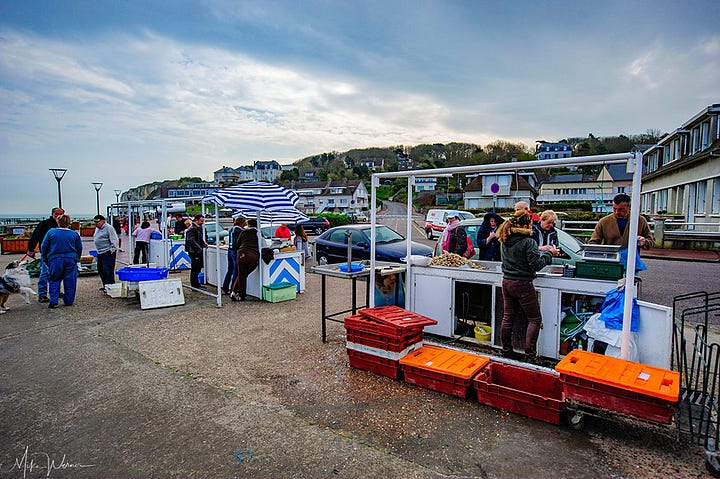
Watercress
Watercress in Veules-les-Roses holds a special place in the cultural and gastronomic heritage of the village. The cool, fresh waters of the Veules River provide an ideal environment for cultivating this aquatic plant. Over the years, watercress cultivation has become synonymous with Veules-les-Roses, and the village is renowned for its high-quality produce.
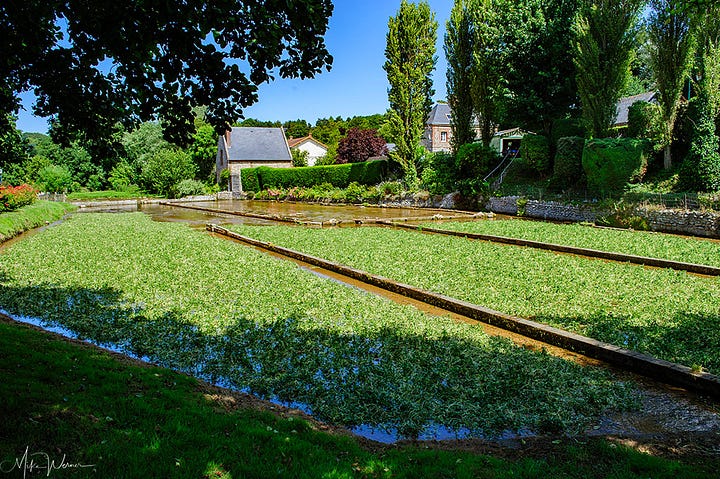
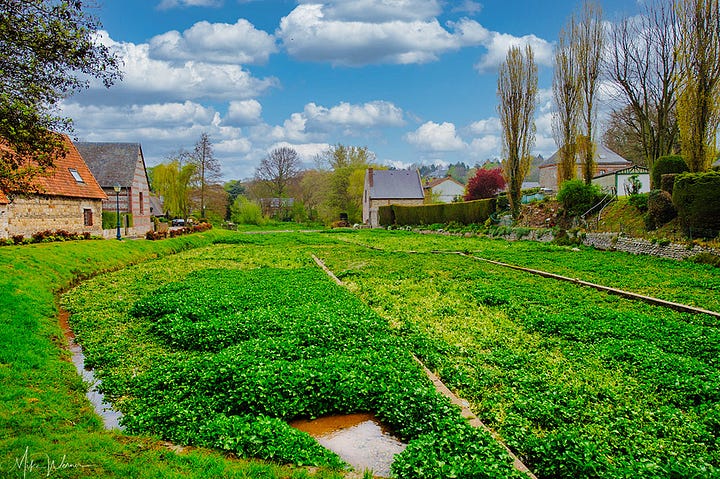
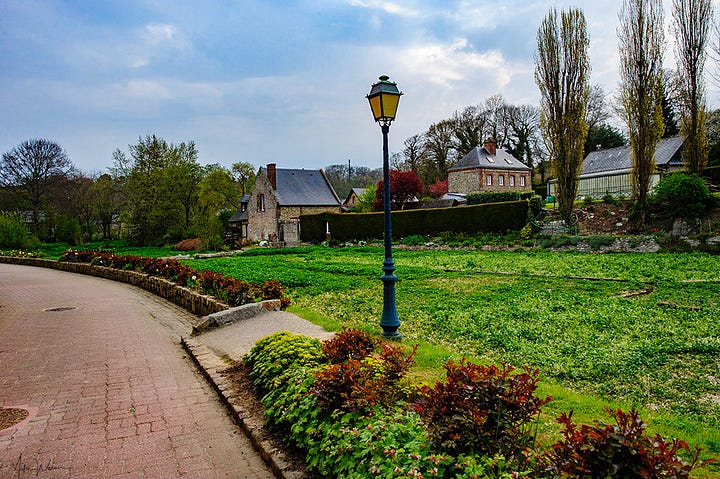
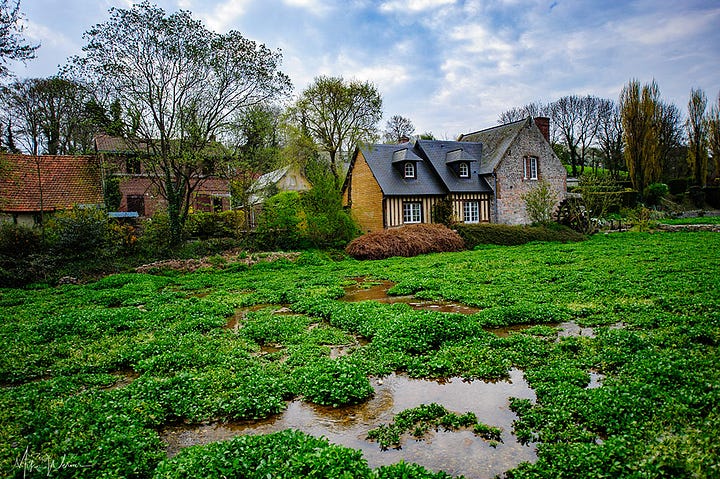
The unique taste of watercress from Veules-les-Roses is a result of the mineral-rich waters of the Veules River. The watercress beds, which have been part of the landscape for generations, are a captivating sight, with their lush green against the flowing river waters.
Watercress farming is a meticulous process. The plant requires constant flowing water, which is naturally filtered and purified by the riverbed. Farmers in Veules-les-Roses have honed their skills over the years, perfecting the art of growing and harvesting watercress. The result is a crisp, peppery leaf that is highly sought after in culinary circles.
In the local cuisine, watercress from Veules-les-Roses finds its way into a variety of dishes. From simple salads that allow the freshness of the leaves to shine, to soups and sauces that harness its distinctive peppery flavor, watercress has become emblematic of the village's culinary offerings.
Beyond its culinary significance, watercress has long been appreciated for its medicinal properties. Rich in vitamins and minerals, particularly Vitamin C, it's known to have antioxidant and anti-inflammatory benefits.
Today, watercress cultivation remains an important aspect of Veules-les-Roses' identity, binding together the threads of tradition, nature, and gastronomy. The village's commitment to preserving this tradition ensures that future generations can continue to enjoy the unique flavor and health benefits of Veules-les-Roses watercress.
Conclusion
In essence, Veules-les-Roses is more than just a scenic spot on the French coast. It's a tapestry woven with rich history, natural beauty, cultural vibrancy, and a deep sense of community. Whether you're a history buff, an art lover, a gourmet, or just someone looking for a serene getaway, this village promises a memorable experience.

